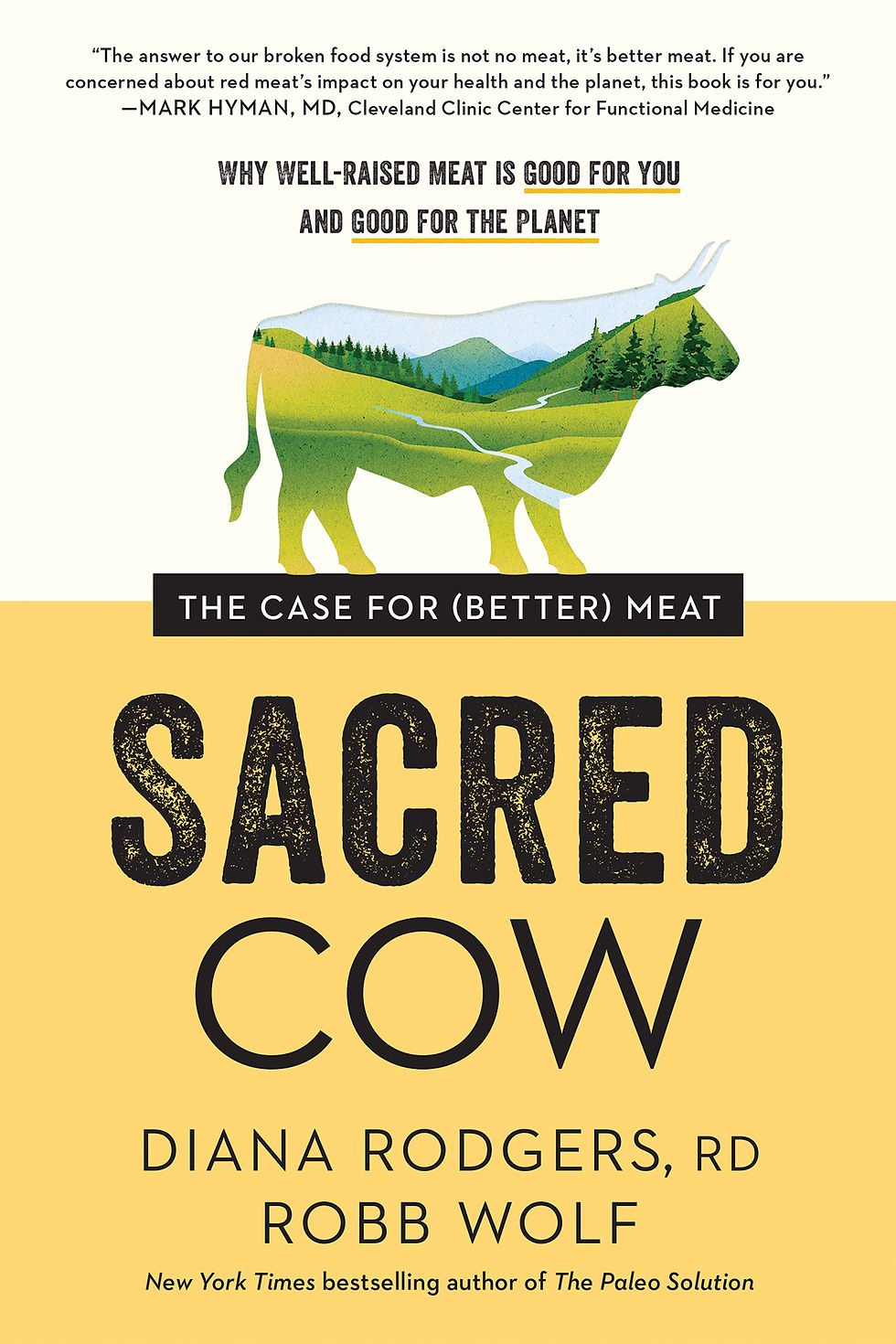Where's the Beef?
- Tamara Shrugged
- Jul 23, 2021
- 4 min read
Updated: Apr 10, 2024
“Meat is a singular focus of all that is wrong with the modern world, including individual health concerns, privilege, and destroying the planet.” – Sacred Cow
In 1984, Wendy’s burger chain unleashed a new ad mocking their competitor’s “big buns”, by declaring “Where’s the Beef”? while at the same time affirming that their own burgers came with more meat than the Whopper and Big Mac. This catchphrase revived a debate that began more than twenty years earlier, about the proper place of animal protein and fat in the American diet.
Beginning as early as the 1960s, Americans were repeatedly warned that a diet high in saturated fats and cholesterol resulted in heart disease, cancer, and overall poor health. Instead, we were instructed to eat a low-fat diet of mostly grains, fruits, and vegetables, using vegetable oils, with little to no red meat. It turned out they were wrong, and the results have been notably disastrous. This mistaken regimen, void of any meaningful science or logic, led to an obesity crisis and even worse health from the lack of necessary nutrients. Now, Americans suffer from more diabetes, heart disease, and chronic degenerative diseases. By 2014, the WHO had revealed that more people were obese worldwide than underweight.
Much like the current global warming and COVID debates, dissenters and skeptics were bullied out of the discussion, allowing only one side to be heard. If we allow this myopia to continue over the role of animal meats in modern diets, we are likely to continue with the same dismal results.
In Diana Rodgers and Robb Wolf’s 2020 book, “Sacred Cow”, the authors make the scientific case for red meat as a nutritional component in American diets by destroying the myths and outright lies that meat is not only dangerous in our diets but also to the environment. Instead, they provide substantial and conclusive data on how red meat is one of the most nutrient-dense foods available and critical to good health. Regarding animal life and its effect on the environment, “Sacred Cows” advocates a return to mixed farming and well-managed cattle as a means of sustaining planetary health. Rodgers, a dietician, and Wolf, a biochemist, focus their defense of animal protein in three areas: nutrition, the environment, and ethics. A documentary by the same name is also available on several platforms.
It’s no surprise that the current American diet is high in overprocessed foods with artificial ingredients, refined carbs, excessive sugar, and sodium. The government subsidizing of commodities like corn, wheat, and sugar, has facilitated the highly processed diets we have today with too many carbs and empty calories, and not enough protein and nutrients. Not only did subsidies directly contribute to unhealthy outcomes, but they also contributed to making harmful foods less expensive than healthy alternatives.
In light of these concerns, experts are increasingly recommending a return to ancestral eating of wholesome, natural, and unprocessed vegetables, fruits, meat, and traditional fats. Journalist Nina Teicholz, from her book, “The Big Fat Surprise”, notes:
“Americans in the eighteenth century used to eat three to four times more red meat than they do today...Meat is the central food throughout all of human history, as recorded by humans themselves. We’ve forgotten our history at our peril.”
The current per capita consumption of red meat is about 50 pounds per person per year, a third of what it was a few centuries ago when heart disease was rare. Diets without animal products lack many of the nutrients found in meats and some may even block the absorption of minerals, resulting in a need for added supplements. In a well-rounded diet, red meat is at the top of the food chain, as a better source of protein per calorie than plants. Increasing the amount of meat back into American diets would also assist in needed weight loss, by suppressing appetite and satiating hunger.
The greatest culprit in the eyes of the environmental movement is cows, with most of their reasons unsurprisingly illogical. While chickens and pigs feed almost exclusively on grains, cows upcycle nutrients by consuming low-nutrient plants, like crop residue and other non-edible food sources, before converting them into high-quality protein for human consumption. And this is all done naturally while grazing and expelling natural fertilizer back into the soil. Properly managed cattle are far better for the environment than the environmentalist goal of replacing grasslands and fields with monocultural plant-based agriculture.
To make matters worse, removing animals from the natural ecological cycle would create a domino effect on the overall ecosystem that is often ignored. Clearing grazing land for crops would result in significant harm to habitats. Environmentalists calling for a plant-based diet using smokestack factories to smash together nutrient-barren plants into fake meat patties hope to replace a natural food system with an industrialized imitation. Regenerative agriculture looks to improve the health of the soil, while industrial agriculture relies on synthetic fertilizers, pesticides, and herbicides.
Like culture, we need diversity in a nutritional diet to thrive. Americans need fewer calories and more nutrients. Any diet must start by avoiding industrially processed foods, sugars, and unnatural fats. Meat is a veritable superfood, good for both the body and the environment, and, therefore, perfectly ethical to produce and eat. It’s time once again to ask the question: “Where’s the Beef? Hopefully, this book will convince you to put it back into your daily diet.







Comments